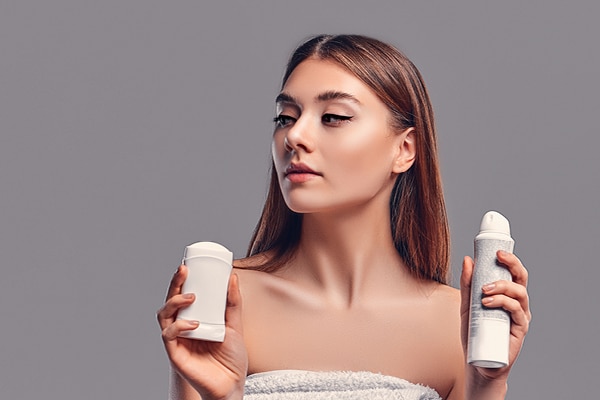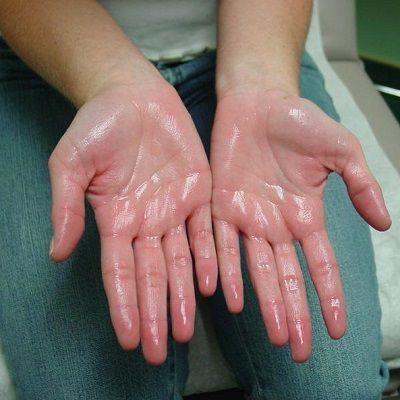Top Dermatology Treatments for Hyperhydrosis of Hands and Feet: What You Need to Know
Top Dermatology Treatments for Hyperhydrosis of Hands and Feet: What You Need to Know
Blog Article
Unveiling the Complexities of Excessive Sweating: A Comprehensive Overview to Diagnosis and Administration
Excessive sweating, medically understood as hyperhidrosis, is a problem that affects a considerable number of individuals and can have an extensive effect on their lifestyle. While sweating is a natural bodily feature, its overactivity in hyperhidrosis offers a special collection of obstacles that frequently surpass plain discomfort. Understanding the underlying causes, acknowledging the signs and symptoms, and browsing the analysis procedure for hyperhidrosis can be detailed jobs. In this comprehensive guide, we will explore the complexities of hyperhidrosis, from its diagnosis to the range of treatment choices offered, dropping light on efficient administration methods for those facing this problem.

Recognizing Hyperhidrosis Causes
Hyperhidrosis creates can be attributed to different factors such as genes, hormone imbalances, and particular medical conditions. Genes play a significant function in key focal hyperhidrosis, where individuals acquire the problem from their family participants. By determining the details elements adding to excessive sweating, health care companies can customize treatment strategies to deal with the underlying reason, providing relief and boosting the quality of life for people affected by hyperhidrosis.
Identifying Hyperhidrosis Effects

Furthermore, hyperhidrosis signs might manifest in social and psychological distress, as people might really feel humiliated or anxious about their sweating, leading to avoidance of social situations (Exessive Sweating). Additionally, repeated episodes of too much sweating can lead to skin maceration, fungal infections, and a general decrease in self-esteem
Diagnostic Process for Hyperhidrosis
Initiating the analysis process for excessive sweating involves thorough evaluation of the person's clinical history and physical exam. Making inquiries regarding the beginning, duration, and causes of sweating episodes is vital to set apart between primary focal hyperhidrosis and additional generalised hyperhidrosis. Medical history must additionally consist of concerns concerning medicines, clinical conditions, and household background of hyperhidrosis.
During the physical exam, particular interest is paid to the locations affected by sweating. The doctor may analyze the extent of sweating, look for indicators of underlying conditions, and examine the impact of sweating on the individual's lifestyle. In addition, certain examinations like the gravimetric examination, starch-iodine test, or skin conductance measurements might be performed to quantify the amount of sweat created.
Moreover, in instances where second hyperhidrosis is believed, added examinations such as blood examinations, pee examinations, and imaging researches might be advised to recognize the underlying root cause of extreme sweating. The analysis process aims to accurately identify the type and reason for hyperhidrosis to guide appropriate management strategies.
Treatment Alternatives for Hyperhidrosis
When dealing with excessive sweating, various treatment alternatives are available to alleviate signs and symptoms and boost the person's high quality of life. The treatment approach for hyperhidrosis depends on the extent of signs and symptoms site link and the individual's reaction to initial treatments.
Topical therapies, such as aluminum-based antiperspirants, are commonly suggested as the initial line of defense for taking care of mild instances of hyperhidrosis. For individuals with a lot more severe signs, dental medicines like anticholinergics might be prescribed to aid decrease sweating.

Effective Management Strategies
To efficiently handle hyperhidrosis, a individualized and comprehensive treatment strategy customized to the person's certain requirements and action to previous therapies is vital. This plan may incorporate a mix of healing techniques, consisting of lifestyle modifications, topical therapies, dental medicines, botulinum toxin injections, iontophoresis, and in extreme situations, surgical treatments like gland removal or sympathectomy. Lifestyle alterations such as putting on moisture-wicking clothes, using antiperspirants, and exercising stress-reducing methods can complement clinical treatments. Our site Topical antiperspirants including light weight aluminum chloride are usually the first-line treatment, with stronger solutions offered for resistant situations. Oral drugs like anticholinergics may be prescribed for generalised hyperhidrosis. Botulinum toxin shots work for focal hyperhidrosis, providing short-lived relief by obstructing the release of acetylcholine. Iontophoresis, involving the usage of a reduced electric current to minimize sweat gland task, can be advantageous for both palmoplantar and axillary hyperhidrosis. Surgical alternatives are usually reserved for serious, refractory cases and need careful factor to consider of benefits and risks. A multidisciplinary technique involving skin doctors, primary care medical professionals, and, if required, surgeons, can enhance the monitoring of hyperhidrosis.
Conclusion
In final thought, hyperhidrosis is a problem defined by too much sweating, which can substantially influence an individual's lifestyle. By understanding the causes, recognizing the symptoms, and undergoing the diagnostic process, doctor can properly handle this problem. Treatment choices include topical medicines, oral medications, injections, and also surgeries in extreme situations. With appropriate diagnosis and management techniques, individuals dealing with hyperhidrosis can locate alleviation and enhance their general well-being.
Excessive sweating, clinically understood as hyperhidrosis, is a condition that influences a considerable number of individuals and can have an extensive effect on their quality of life. By recognizing the certain elements adding to extreme sweating, healthcare providers can customize treatment strategies to deal with the underlying reason, using relief and enhancing the high quality of life for individuals affected by hyperhidrosis.
Hyperhidrosis, defined by extreme sweating beyond what is necessary for managing body temperature, can significantly affect an individual's high quality of life. Inquiring regarding the onset, duration, and triggers of sweating episodes is crucial to separate in between primary focal hyperhidrosis and additional generalised hyperhidrosis. Treatment for hyperhydrosis of hands and feet.In conclusion, hyperhidrosis is a problem Continue characterized by extreme sweating, which can substantially impact a person's top quality of life
Report this page